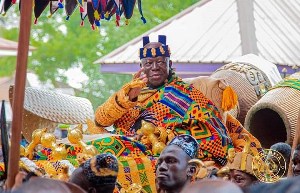- Home - News
- TWI News | TV
- Polls
- Year In Review
- News Archive
- Crime & Punishment
- Politics
- Regional
- Editorial
- Health
- Ghanaians Abroad
- Tabloid
- Africa
- Religion
- Election 2020
- Coronavirus
- News Videos | TV
- Photo Archives
- News Headlines
- Press Release
Business News of Thursday, 18 April 2013
Source: B&FT
Mobile subscription rate slows
The number of mobile phone network subscriptions recorded a 1.1 percent growth between January and February this year, making the period one of the lowest month-on-month growth rate figures in the last three months.
Data from the National Communication Authority (NCA) shows that the total mobile phone subscriber base stood at a little over 26.3 million at the end of February this year. This brings the mobile penetration rate in the country to 103 percent, a figure that has been challenged by mobile network operators because “multiple-simming” -- which happens when one subscriber owns more than one SIM card -- is prevalent in the market.
According to the latest NCA figures, MTN controls almost half of the mobile telephony market with a subscriber base of a little over 11.9 million subscribers, cementing the company’s place as the leading mobile network operator in the country. Vodafone’s subscriber base increased to 5.5 million, which represents 21 percent of total market share.
Tigo had a marginal subscriber base increase, closing at 3.7 million, which represents 14.1 percent of the market, while Airtel increased its subscriber base to 3.3 million, representing 12.6 percent of the total market share. Glo also increased its subscriber base to 1.6 million, representing six percent of the total market share.
Expresso also increased its subscriber base, to 163,762. This figure represents 0.62% of the total market share. The mobile phone subscriber base of the country has recently been brought into question because of the issue of “multiple-simming,” which breeds multiple counting of actual subscribers.
Some mobile network operators have argued that the procedure used to calculate mobile subscription numbers is flawed and sends a wrong signal to the business community, as just about half of the country’s estimated 25.6 million population currently have access to mobile voice and data services -- which signifies a wide untapped market for the telecom operators.
The head of the country’s biggest telecommunication network operator, Michael Ikpoki, said the challenge of “multi-simming” sends a wrong signal as to the actual number of people who have access to communication services.
The national telecom regulator contends the Authority uses the accepted international formulae in calculating the mobile penetration rate -- saying that the concern should not be about the penetration rate as there is no ceiling to the rate, and that the country’s liberalised telecom environment means the penetration rate could even hit 600 percent.
Entertainment










